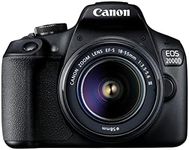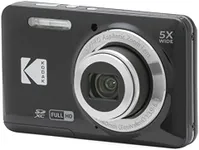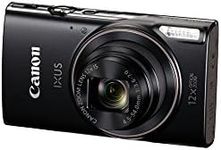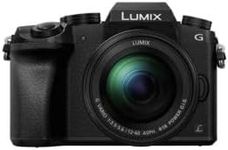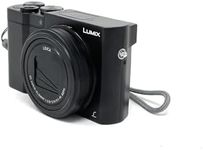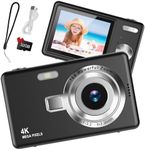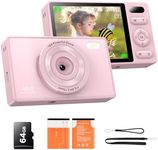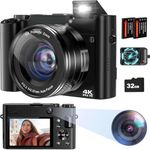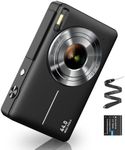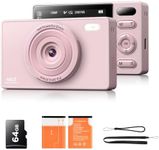Buying Guide for the Best Cheap Digital Cameras
When choosing a digital camera, especially on a budget, it's important to focus on the features that will best meet your needs. Consider what you'll primarily use the camera for, such as travel, family events, or artistic photography. This will help you prioritize certain specifications over others. Remember, a higher price doesn't always mean better quality for your specific needs. Look for a balance between essential features and affordability, ensuring the camera you choose can deliver the quality and functionality you require without unnecessary extras.MegapixelsMegapixels refer to the resolution of the camera's sensor, determining how much detail the camera can capture. More megapixels mean larger images that can be printed without losing quality. For most casual photography needs, a camera with 12 to 20 megapixels is sufficient. If you plan to print large photos or crop images significantly, you might want a higher megapixel count. However, for online sharing or small prints, a lower megapixel count will suffice and can save you money.
Sensor SizeThe sensor size affects the camera's ability to capture light and detail. Larger sensors generally produce better image quality, especially in low light. Common sensor sizes in budget cameras include 1/2.3-inch, 1-inch, and APS-C. If you want better performance in various lighting conditions, opt for a larger sensor. However, for everyday snapshots and good lighting conditions, a smaller sensor can still deliver satisfactory results.
Zoom CapabilityZoom capability is important if you plan to photograph subjects from a distance. Optical zoom is preferable to digital zoom, as it maintains image quality. Cameras often list zoom as a multiple, like 3x or 10x. For general use, a 3x to 5x optical zoom is adequate. If you need to capture distant subjects, such as wildlife or sports, look for a camera with a higher optical zoom range.
Image StabilizationImage stabilization helps reduce blur caused by camera shake, which is especially useful in low light or when using zoom. There are two types: optical and digital. Optical stabilization is generally more effective. If you often shoot in challenging conditions or without a tripod, prioritize a camera with good optical image stabilization to ensure clearer images.
Video QualityIf you plan to use your camera for video recording, consider the video resolution and frame rate. Common resolutions include 720p, 1080p, and 4K. For most users, 1080p is sufficient for high-quality videos. If you want to future-proof your purchase or create professional-looking videos, consider a camera with 4K capability. Also, check the frame rate; 30 fps is standard, but 60 fps can provide smoother motion.
Battery LifeBattery life determines how long you can use the camera before needing to recharge or replace the battery. It's measured in the number of shots per charge. For casual use, a camera with a battery life of around 200-300 shots is usually adequate. If you plan to use the camera for extended periods, such as on trips or events, look for a model with longer battery life or the option to use spare batteries.
ConnectivityConnectivity options, such as Wi-Fi, Bluetooth, or NFC, allow you to easily transfer photos to other devices or share them online. If you frequently share photos on social media or need to transfer images quickly, look for a camera with built-in Wi-Fi or Bluetooth. For those who prefer traditional methods, ensure the camera has a USB port or memory card slot for easy file transfer.

